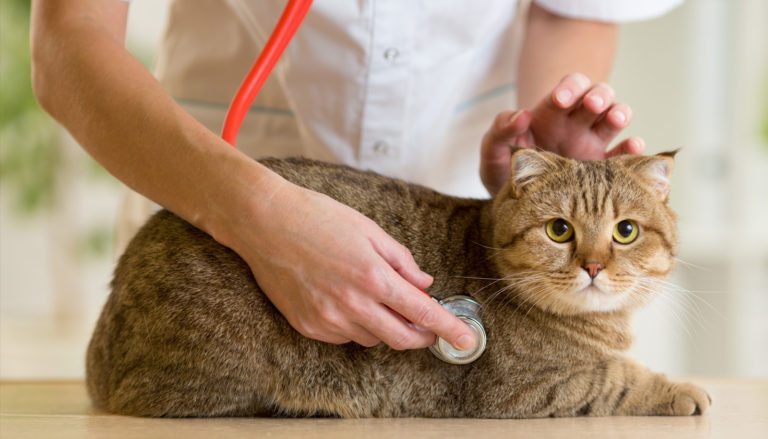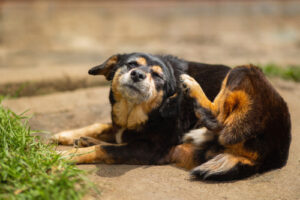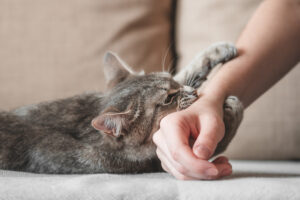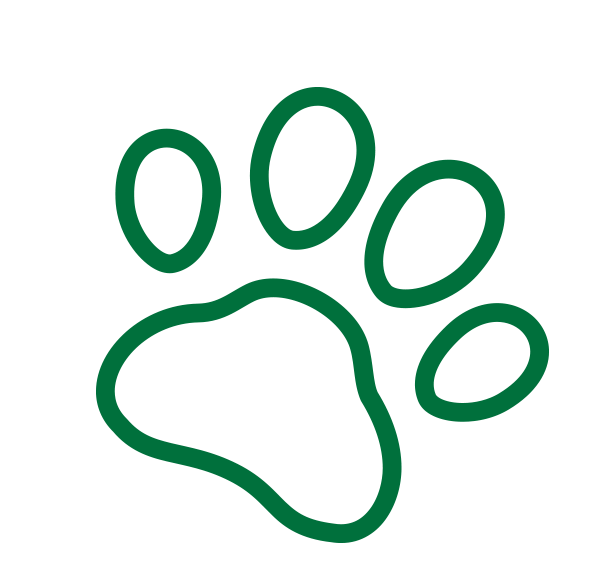Millions of pets in the US are suffering from obesity, and it doesn’t look like it’s going to slow down anytime soon. The family pet just isn’t as active as they used to be, and the foods we feed them aren’t helping matters either- a typical 12.5lb house cat should only receive roughly 200 calories a day, however a cup of dry cat food can contain as much as 400 calories! This same cat should only get 1/4 of a cup of dry food twice a day (less if you feed wet food), but I’ll let you in on a little secret- most pet owners just free feed their cats, filling the bowl (a bowl that very well may be more than a cup), and leaving it out most of the day. Some cats may consume more than a cup of food a day, and when you take into consideration that it is not easy to exercise a house cat it makes sense why we are seeing a rise in feline obesity.
The family dog is experiencing the same problems, but on a slightly different scale, because dogs have one extra factor contributing to obesity- table food. Dr. Stacey Kilcullen has a saying, “Don’t give dinner with dinner,” and that’s exactly what many pet owners do. The pet receives table scraps, and then instead of cutting back on the pet’s dinner, he receives the same cup of food that he gets every evening. While there is nothing wrong with table food (so long as it’s not toxic to your pet), just like our doctors tell us, everything should be given in moderation. Many pet owners also don’t know how much to feed their dogs- most cats are about the same size, meaning they have similar calorie requirements, however since every dog varies in size considerably, what many owners feel is an accurate quantity of food is actually over feeding their pet.
Dr. Ernie Ward, the founder of the Association for Pet Obesity Prevention, and lead veterinarian for the 2012 obesity survey, also sees a clear connection between pet and childhood obesity rates. “The causes of pet and childhood obesity are largely the same: too many high-calorie foods and snacks combined with too little physical activity. Parents need to encourage children to put down their video games and pick up the dog leash to go for a walk. Instead of snacking on sugary treats, share crunchy vegetables with your dog. Eat more whole foods instead of highly processed fast food.”
In a 2012 survey, conducted in October and December 2012, analyzed data from 121 veterinary clinics in 36 states:
- 1,485 dogs and 450 cats were assessed
- Cats: 4.4% male, 49.6% male neutered, 6.2% female, 39.8% female spayed
- Dogs: 8.4% male, 39.1% male neutered, 6.0% female, 46.5% female spayed
- Median age of surveyed pets: Dogs – 6 years of age, Cats – 6 years of age
- Dogs and cats were classified by veterinary clinics as: BCS 1 – Underweight, BCS 2 – Thin but normal, BCS 3 – Ideal weight, BCS 4 – Overweight, BCS 5 – Obese
- Based on 2012 survey results and 2012 American Veterinary Medical Association data 80 million U.S. dogs and cats are overweight or obese.
- Based on 2012 survey results and 2012 American Veterinary Medical Association data
- An estimated 43.2 million cats or 58.3% are overweight or obese (74.1 million U.S. pet cats, 2012 AVMA)
- 29.3 million cats BCS 4 – Overweight
- 13.9 million cats BCS 5 – Obese
- An estimated 36.7 million dogs or 52.5% are overweight or obese (70 million U.S. pet dogs, 2012 AVMA)
- 25.7 million dogs BCS 4 – Overweight
- 11 million dogs BCS 5 – Obese
- An estimated 43.2 million cats or 58.3% are overweight or obese (74.1 million U.S. pet cats, 2012 AVMA)
- Labrador retrievers were the most common pure breed in the study (141/1485, 9.5% total surveyed)
- 58.9% were classified as overweight or obese
- 42.6% – Overweight
- 16.3% – Obese
- 58.9% were classified as overweight or obese
- German shepherds had the lowest reported pure breed Obesity (BCS 5) rate of 2.1%
- 45.8% of dog owners incorrectly identified their overweight or obese dogs as “normal weight” when asked by their veterinary clinic to assess their pet’s current body condition (pet owner’s choices were too thin, normal, overweight, obese)
- 45.3% of cat owners incorrectly identified their overweight or obese cats as “normal weight” when asked by their veterinary clinic to assess their pet’s current body condition (pet owner’s choices were too thin, normal, overweight, obese)
For more information on how to prevent or reverse obesity in your pet, visit The Association for Pet Obesity Prevention. If you suspect your pet has a weight problem and would like help getting them to lose weight, please give us a call and we will put your pet on a weight loss plan!





